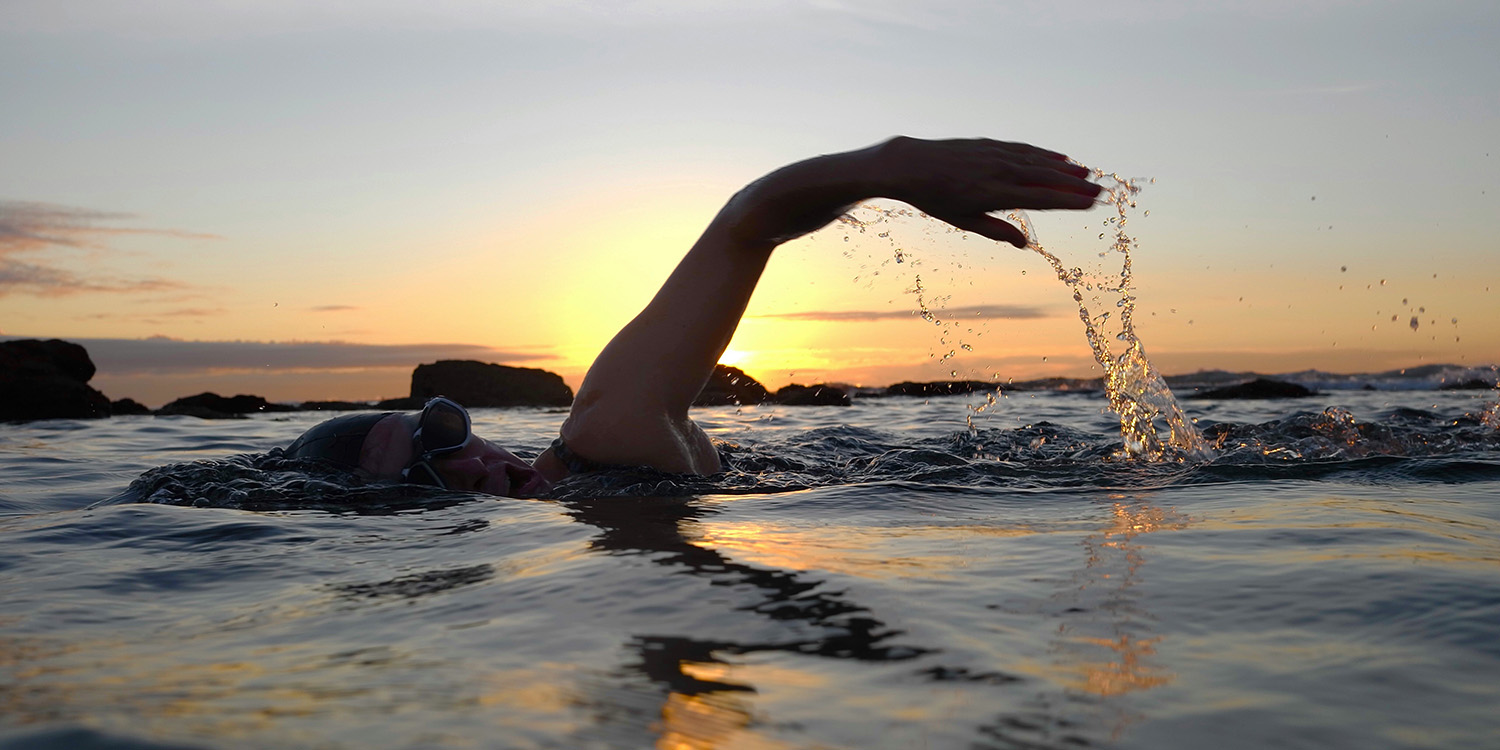Cold plunge pods and wild swimmers seem to be everywhere at the moment. Here’s everything you need to know
Cold-water therapy involves immersing yourself into cold water, 15 degrees celsius or below, for the physical and mental benefits, such as reducing muscle soreness or helping with anxiety. Dipping into cold water is accessible to anyone, and you can partake at home in your shower, by taking ice baths, by visiting cold bodies of water such as seas and lakes, or by splashing out and purchasing a plunge pod.
Although it is believed to have started in 3500 BC, cold-water therapy has become a commonplace term in recent years, as health enthusiasts and influencers are taking to the beach for a cold-water dip. Even the ice bucket challenge, in the summer of 2014, familiarised the world with immersing yourself in cold water. For more information on the origins of cold water therapy, check out our podcast Deep Dive on Spotify.
The types of cold-water therapy
There are a few different cold-water therapy methods to try, all varying in intensity.
Cold-water immersion is best known because of Wim Hof, a motivational speaker and extreme athlete who encourages people to submerge themselves fully into cold water, up to their neck. The Wim Hof method includes breathwork which according to his website, can reduce depression and encourage mindfulness.
Cold-water swimming is simply cold-water therapy in larger bodies of water, either natural (such as lakes, rivers or the sea) or man-made, such as a lido.
Cold showers are perhaps the most accessible way to partake in cold-water therapy, and many cold-water enthusiasts begin their journey by turning down the temperature of their showers to build up their tolerance for cold water.
Contrast-water therapy is a little less known, and involves switching between warm and cold water in one session, either by full submersion or by a single limb. According to hydrothermal spa specialist Don Genders, “the Finnish are among the first known, in relatively modern times, to actively use hot and cold contrast therapy as part of their bathing ritual.” Don says that “after spending time in a hot sauna, bathers would leave the cabin, sweating profusely and take a roll in the snow.”
The benefits
Cold-water therapy is believed to have a lot of benefits for your mental and physical health. It may help protect your immune system from viruses, and can alleviate pain in the muscles which can increase exercise performance and circulation. Like applying ice to a sports injury, cold-water therapy can reduce inflammation, as colder temperatures make blood vessels constrict.
Some research also suggests cold water therapy can reduce symptoms of anxiety and depression. What ever you’re using it for, it is greatly encouraged that you should speak to your GP before you begin your cold-water journey.
One of the best parts of cold-water therapy is that it doesn’t require lots of prep to give it a go. Why not try turning down the temperature, next time you take a shower? Or, if you want to venture into the wild and try cold-water swimming, go for it. Just make sure that you bring all the essential kit with you.

